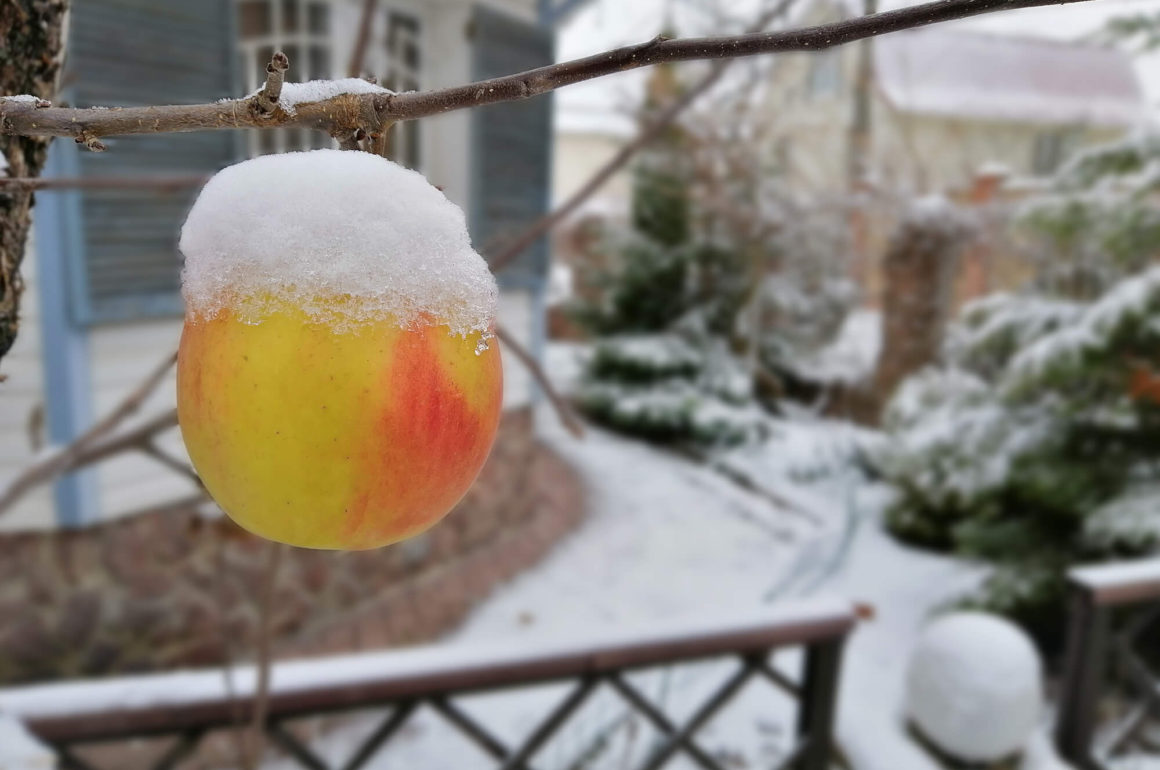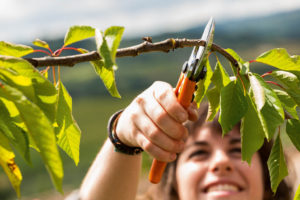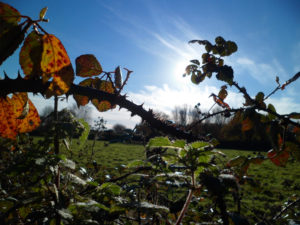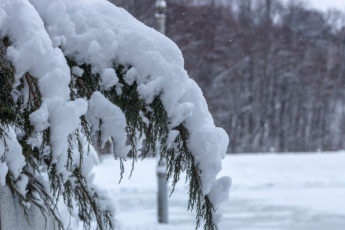
There aren’t that many jobs to done in the garden during winter that we would classify as vital, but one task that does drag us outside from the warmth of a log-burning stove is pruning fruit trees and bushes. Not all types of fruit should be pruned at this time of year but we have four – apple, blackcurrant, gooseberry and autumn raspberries – that require us to pick up the pruners and flex our fingers.
Here’s how we tackle them…
Apple trees
Our apple trees have now been safely established between four and eight years so the winter task of pruning them is to keep them in good growing shape. When pruning apple trees that are in their first and second year, more severe cutting is needed in order to get them off to the correct start, and any apples they bear should be nipped off as it appears to channel all of their energy into the first few years of crucial growth.
Although our trees are growing strongly their current pruning needs only require the services of a decent pair of pruning shears, but it won’t be long before we’ll be turning to one of our pruning saws for bigger branches. It’s essential that whatever tool you use is in top condition and sharp: you want your cuts to be as clean as possible –crudely severed branches can attract diseases.
All we’ll be doing to those trees this year is simply removing any branches that are either damaged or cross over with other branches and trimming a few more to maintain a good shape – ideally an open, airy, goblet-shaped tree is our aim. The key is to cut as little as you can: try avoiding taking off more than 20% of the tree as this will encourage it to throw out even more branches with vigour and will make the tree too dense. And don’t go cutting away at every branch on the tree – all this will do is send out more new shoots from the ends of those branches and you’ll have fewer sturdy old branches on which the fruit will grow.
 Blackcurrant bushes
Blackcurrant bushes
Blackcurrants and gooseberries can be pruned after they’ve done their work in late autumn, but we always leave it until winter for a great big prune-a-thon alongside the apple trees. The tart round berries of the blackcurrant grow best on the bushes’ newest branches – i.e. those that grew in the year just gone. Therefore it’s advisable to cut out all the older branches at the base, focusing growth onto those younger fruit-bearing shoots and the new branches that will spring forth this year. This should naturally thin out the bushes to a more manageable size and prevent overcrowding, but if it’s still looking a bit dense then there’s no harm in losing a few more branches.
Our plants have also started shooting out at all angles, taking up more space than we would like, so we’ve been extra ruthless this year and chopped off any branches that are veering too far from a vertical direction.
Gooseberry bushes
Gooseberries aren’t quite as fussy as blackcurrants about what branches they appear on, although any growth over three years old will be running out of steam so it’s best to remove these oldies. Once this wood is gone the next task is to thin out any overcrowded areas to allow new shoots room to grow. This is a good opportunity to cut out any straggly growth that makes the bushes look untidy or provide a thorny hazard for arms and sleeves while picking.
When you’re left with an airy, tidier bush, cut back all the remaining branches by a half and you’ll be set for the best possible berry bounty.
Raspberry canes
 Our final winter fruit pruning task is also the easiest. We grow autumn fruiting varieties of raspberries which simply need hacking back to ground level – new fruit bearing canes will start their ascent in spring time. The time to cut back summer fruiting raspberries is autumn. For these plants you’ll need to remove the canes that bore fruit the season just gone, leaving the newer shoots to grow strong.
Our final winter fruit pruning task is also the easiest. We grow autumn fruiting varieties of raspberries which simply need hacking back to ground level – new fruit bearing canes will start their ascent in spring time. The time to cut back summer fruiting raspberries is autumn. For these plants you’ll need to remove the canes that bore fruit the season just gone, leaving the newer shoots to grow strong.
Once pruning is complete it’s important to clean up your tools and give them a light wipe over with oil if it’s going to be a while before you next use them. You can then return to the warmth of the living room with an extra glow of satisfaction at having completed an important task that will (quite literally!) bear fruit later in the year.
What fruit trees do you have in your garden? Have you braved the cold to prune them yet? We’d love to hear about it, so share your experiences in the comments.



 Blackcurrant bushes
Blackcurrant bushes The Two Thirsty Gardeners, Rich and Nick, are bloggers who love gardening, eating and drinking in equal measure! They love to share tales from their allotment including their experiments turning the spoils of their crops into alcohol, both the good and the bad!
To find out more about Rich and Nick,
The Two Thirsty Gardeners, Rich and Nick, are bloggers who love gardening, eating and drinking in equal measure! They love to share tales from their allotment including their experiments turning the spoils of their crops into alcohol, both the good and the bad!
To find out more about Rich and Nick, 











Leave a Comment